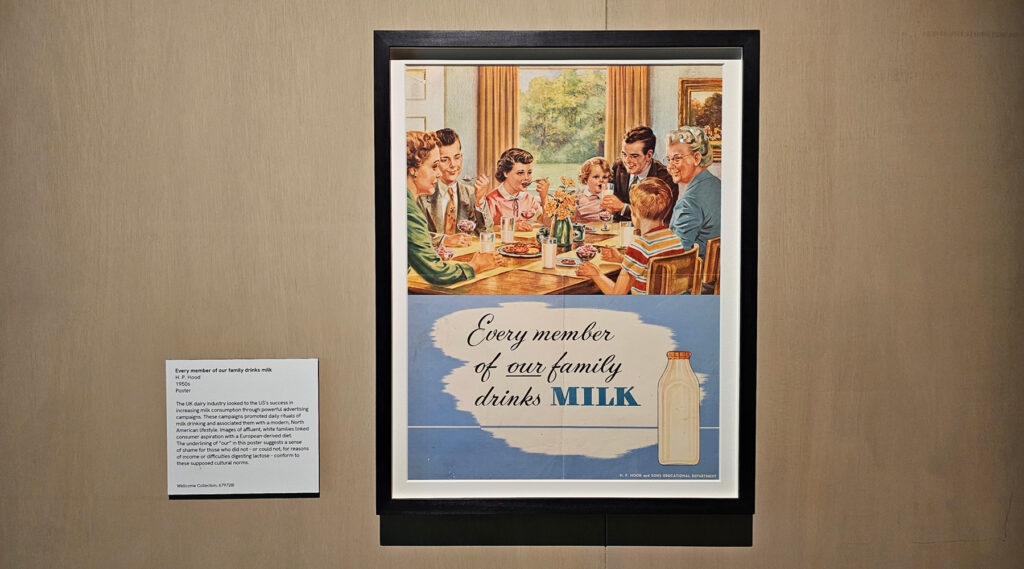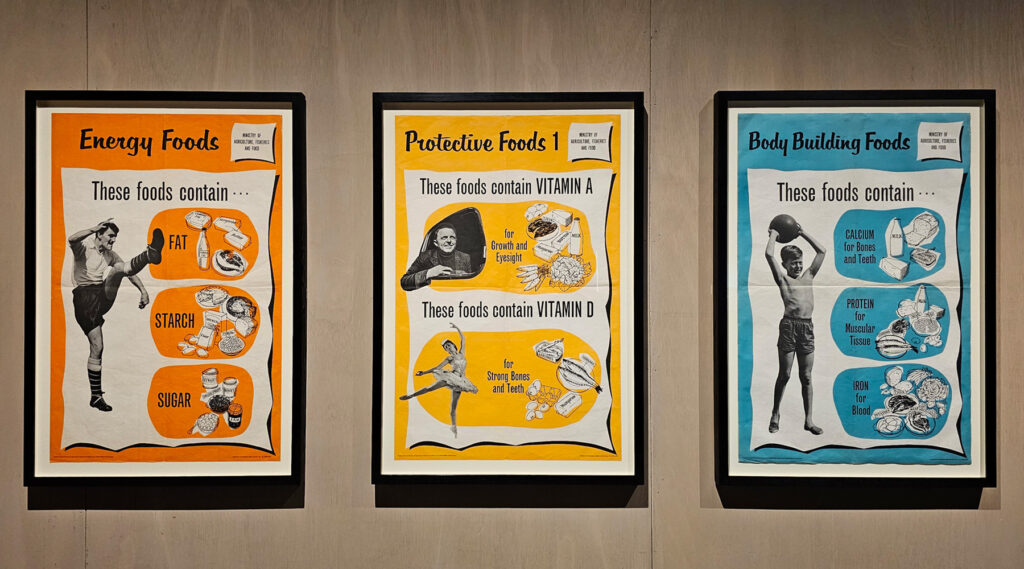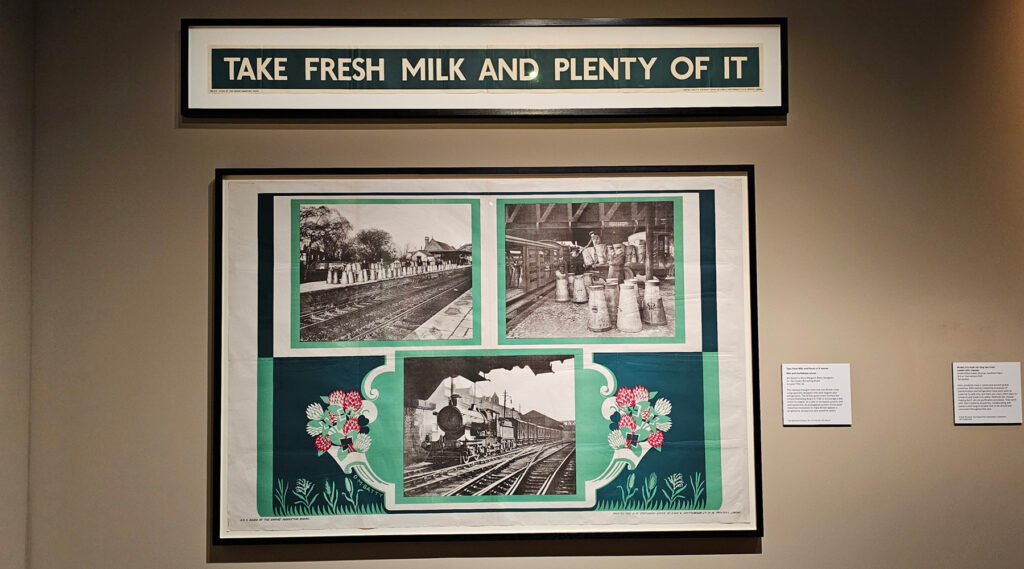An exhibition about milk should be fresh and inviting and wholesome, a bit like the product itself, but somehow this exhibition leaves you feeling like the milk’s gone off.
Milk is a difficult topic to look at, as it ranges from the wholesome drink of our youths to the planet killing product that needs to be replaced with oat and almonds. But the exhibition somehow misses most of that and tries a bit too hard to blame milk for perpetuating stereotypes about race and society.
Opening with a huge alien creature, which is an artwork that looks somewhat udder-like, but being blackened with charcoal it’s far from the nourishing milk of our imaginations.
The display quickly moves into more comfortable lands, by looking at the history and distribution, mostly of cows milk for consumption by humans. From the science of pasteurisation to the mechanics of distribution, there’s a lot here to remind us how our pinta arrives — if not on the doorstep anymore — at least in the supermarket.
Where the exhibition is at its best visually, and worst caption-wise is the large collection of marketing posters promoting the drinking of milk. Most of the images are what we might say, of their time, and unsurprisingly, they feature perfect idealised families to show how milk supports the creation of perfect idealised families.
A lot of this was going on at a time when marketing was young and yes, society would have looked aghast at the image of a black person in a poster, and the idea of inclusion in marketing simply didn’t exist at the time. And goodness me, there was a lot of racism at work — the exhibition rightly highlights examples, such as future US President Herbert Hoover saying “The white race cannot survive without dairy products”, and that the quote was used in early milk marketing.
My gripe is that the explanatory captions try almost too hard to point out how everything is racist or denigrating the poor or so other evil perpetuated by the marketing people when quite often it wasn’t.
Outside the cow breeding experts who know which cows come from where, I doubt many people look at a picture of a cow in an African farm and think of European colonialists at work — but the exhibition tells you that you do.
Other issues, such as giving vouchers to poorer families to buy milk is reported as controlling access to food, which seems a bit of a push.
Unsurprisingly, no exhibition about milk can ignore the Thatcher elephant in the room, the main lesson I took from Thatcher the Milk Snatcher is politicians should never have names that easily rhyme.
The exhibition does note that milk was initially withdrawn in 1968 from Secondary Schools (by a Labour government), and later much more famous from all schools by Thatcher in 1971. Not commented on in the exhibition is that frankly, a lot of school children hated school milk, which was often served just a bit too warm and was quite unpleasant to drink.
Interestingly for an exhibition that seems to go a lot of effort to tell us how bad milk is, it makes very little mention of the plant-based milks that are seeking to supplant it. They’re here, but it’s a very skimmed over aspect of the history of milk.
Overall, it’s an interesting exhibition that looks partly at how milk moved from a domestically produced product into the industrial product it is today, and I would have liked to see a lot more of that, and rather less of the hand-wringing.
The exhibition, Milk is at the Wellcome Collection until 10th September and is free to visit.
It’s open every day except Monday.










“..it’s a very skimmed over aspect of the history of milk.”
Bravo sir, bravo.
I totally agree @ pushing an agenda. Great article.
The curation of Milk at a different venue will probably have addressed, presented, highlighted or omitted some of the information on display at the Wellcome collection. They address all their exhibitions from a bio-physio-sociological perspective. In these times of a climate crisis, in part driven by the way humans rule, invade and nourrish ourselves, and also, personally, having been breastfeeding for most of 2022, I found Milk one of the best exhibitions I have attended in the last year. I can’t help noticing that the article doesn’t mention any part of the exhibition that relates to the human milk, and craves more science-base facts about the development of mass production of Milk for humans, for which you can go on a factory tour. I celebrate that the Wellcome collection presents the topic of Milk from a socio-economic perspective, to make us realise how something very basic that we take for granted has shaped society and still perpetuates stereotypes in detriment of racial, wealth, and wellbeing equality. I invite a revisit to the exhibition. And I take this opportunity to congratulate the work of this blog, even if my first comment is more of a criticism. All the best,
Wellcome has really turned it up to 11 on trying to be down with the kids, just look at what it did to its excellent Medicine Man exhibit.
At the risk of hyperbole, it borrowed the Soviet style disappearing of the person, erasing poor Wellcome from his own collection and pretending he never existed.
I felt nagged at. I stopped reading the captions half-way though, so wasn’t told what I should think.